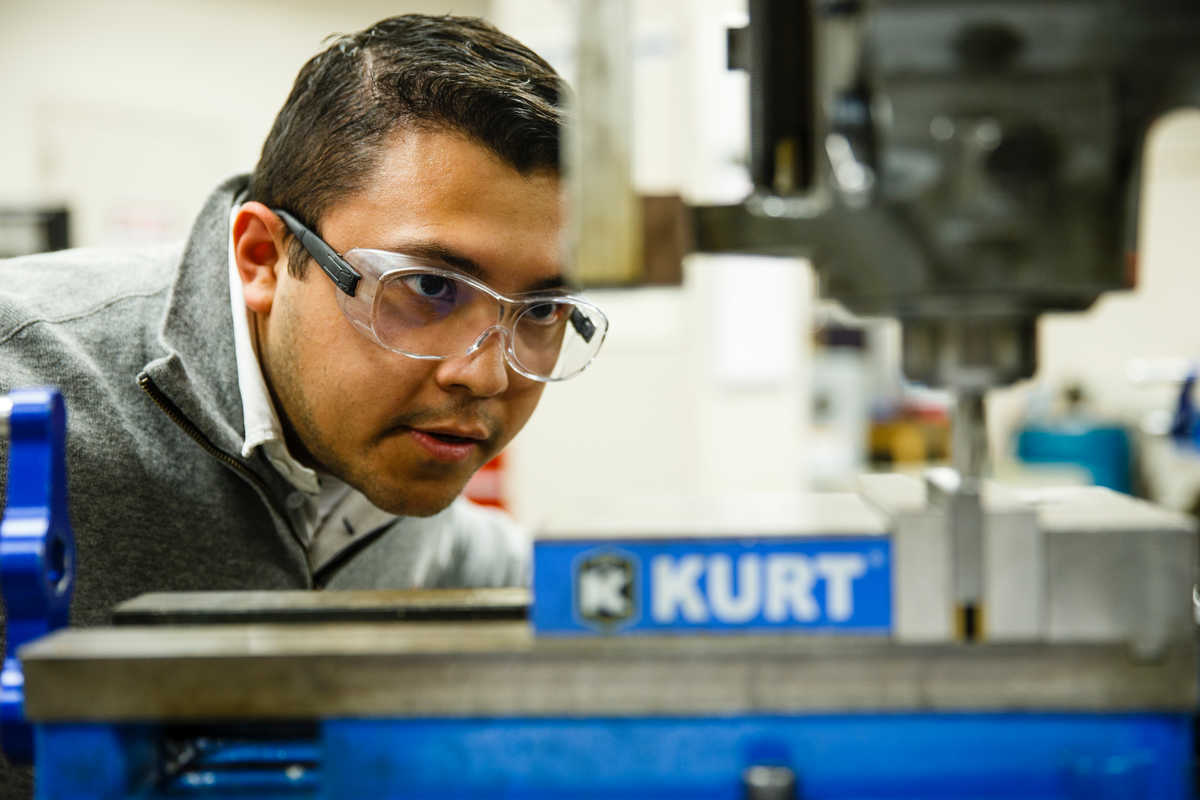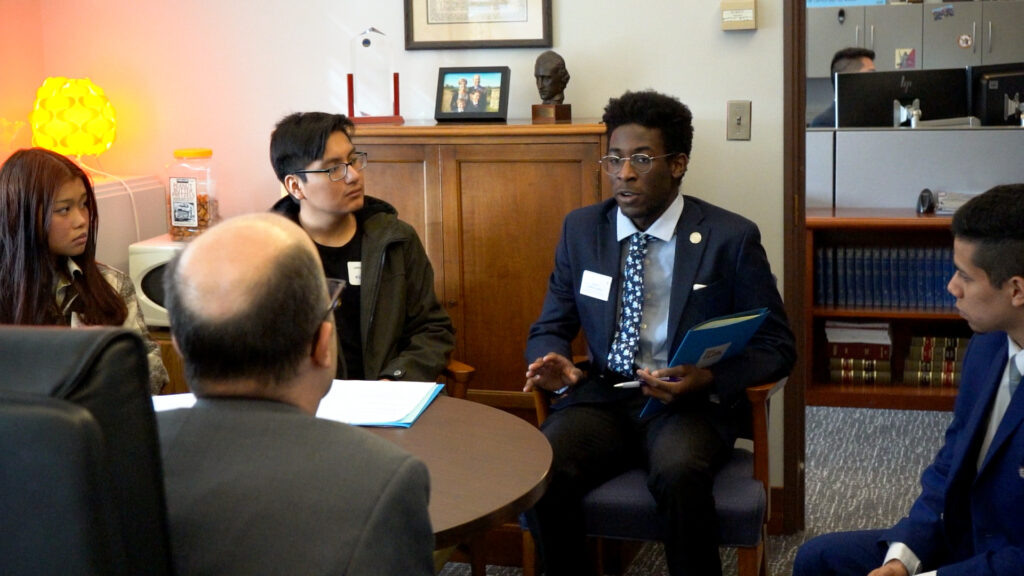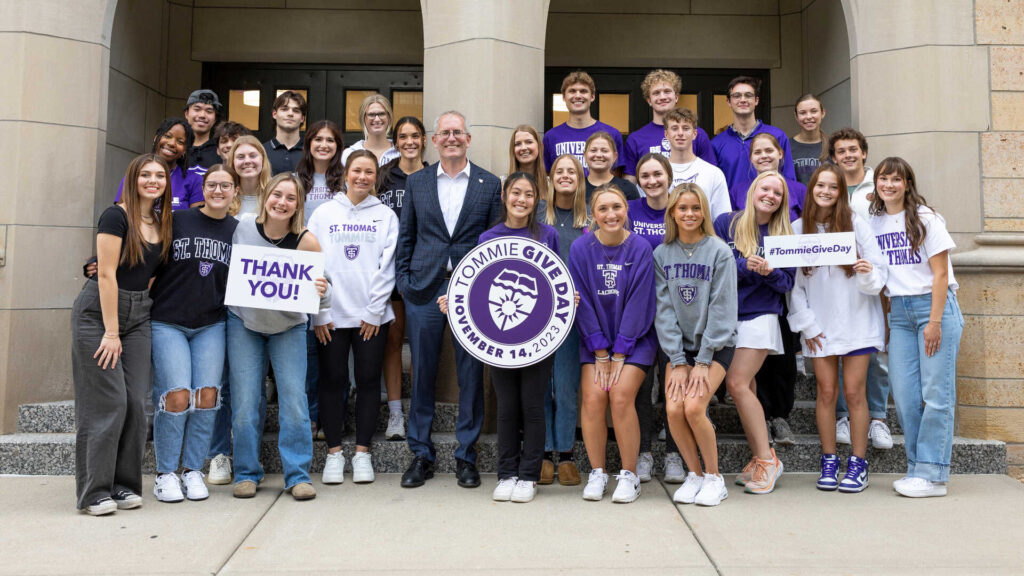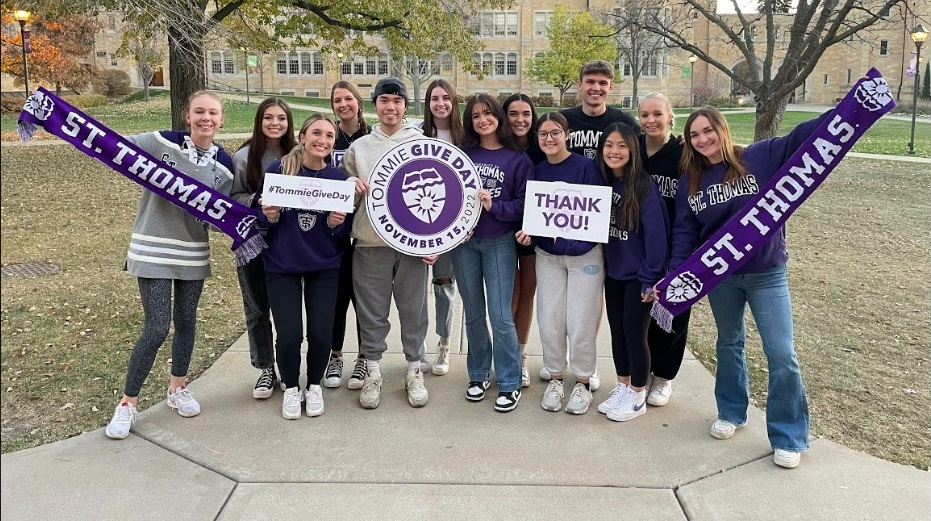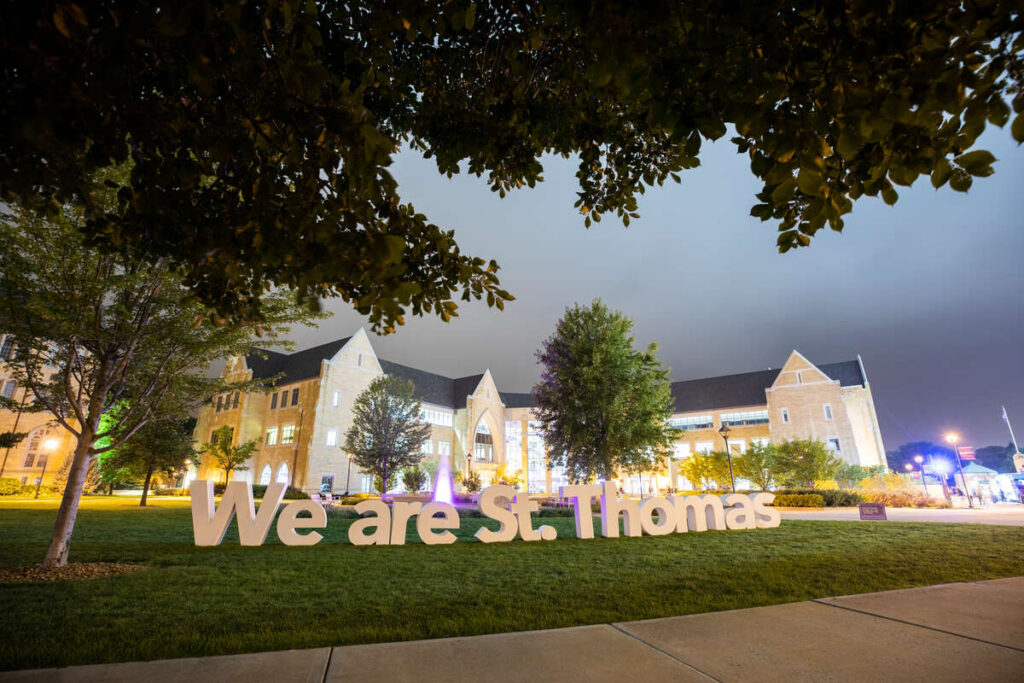The University of St. Thomas’ School of Engineering was awarded nearly $1.5 million from the National Science Foundation (NSF).
The funds will be used, in part, to increase recruitment, retention and graduation rates of select transfer students seeking a bachelor’s degree from the Minneapolis-St. Paul-based university.
The six-year grant from the NSF Scholarships in Science, Technology, Engineering, and Mathematics (S-STEM) Program will fold into the School of Engineering’s APEX Project: Engineering a Transfer-Friendly Experience initiative. It will help fund scholarships to 31 unique full-time students who are pursuing bachelor’s degrees in civil, computer, electrical, or mechanical engineering.
Academically talented engineering transfer students who have demonstrated financial need have an opportunity to receive scholarships for up to three years. Under APEX, the Alternate Pathways to Excellence Project, the scholars will be divided into four cohorts of six to 10 students. The application process will begin in spring 2022 for fall 2022 enrollment, with each recipient receiving $10,000 per academic year.
“The goal of this grant is to increase the pipeline to the School of Engineering for transfer students and to strengthen the infrastructure to further support them,” said Dr. Katherine Acton, associate professor of mechanical engineering and one of the four principal investigators for the grant. “That includes mentoring and advising, both formal and informal.”
“Admitting transfer students to the School of Engineering is a way to cultivate diversity in the program, from first-generation college students to underserved populations, as well as the nontraditional student,” said Dr. Kundan Nepal, the chair of the electrical and computer engineering department, another principal investigator who co-wrote the grant application.
“[The scholarship] is open to pretty much any transfer student, but we know what our backyard looks like. We know the demographics of the Minneapolis-St. Paul area and the community colleges here represent what this area looks like in terms of diversity, equity and inclusion,” he said. “This scholarship will really help us get as close as possible in trying to meet those goals [for diversity]. And to support those who don’t see themselves at St. Thomas yet.”
To reach potential scholars, the School of Engineering will also closely partner with several area community colleges, including Anoka-Ramsey Community College, Century College, Inver Hills Community College, Normandale Community College and Saint Paul College.
“We work with the faculty [at our partner community colleges] to try and make the transfer process a lot smoother,” Nepal said. “Our goal is to try and get everybody out in two years, if we can, with every support we can provide them.”
It's common for students to transfer from a two-year community college to a four-year institution to earn a bachelor's degree. Two-year schools typically offer less expensive tuition rates. Nearly 40% of transfer students nationwide come from community colleges. Overall, there were 2.1 million transfer students in the U.S. between July 2020 and June 2021, according to the National Student Clearinghouse Research Center.
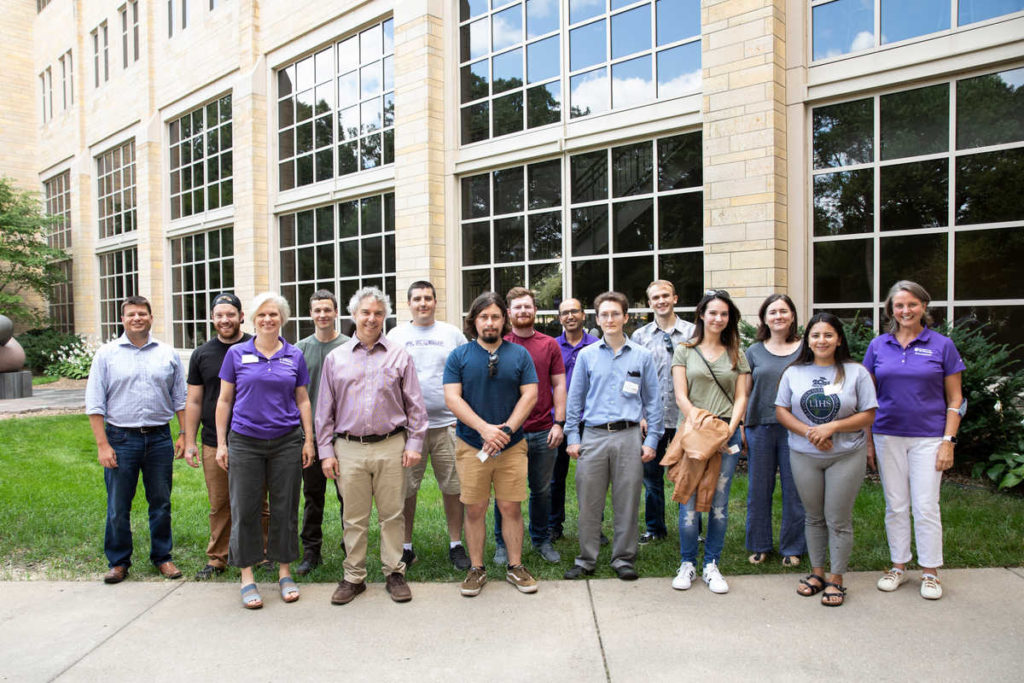
“The University of St. Thomas has approximately 25 transfer students who enrolled in the School of Engineering for the 2021-22 academic year,” said one of the other grant principal investigators, Dr. Deb Besser, who is director of the Center for Engineering Education and chair of civil engineering at St. Thomas. In fall 2020, a total of 86 of the 649 engineering majors were transfer students, representing 13% of all incoming engineering majors. Across the school, nearly 25% of all undergraduate engineering students who graduate from St. Thomas are transfer students.
“If that population is where the diversity is coming from – and not just diversity in terms of race, but also in terms of experience – then this is a reason to increase that population at the university,” said Nepal, who was excited to speak about one of this year’s new transfer students who attended the school’s transfer orientation.
“Here was a young man who had spent a couple of years on a nuclear submarine, building and fixing electrical stuff,” Nepal said. “I cannot imagine the possibilities of the diversity of thought he will bring to the classroom. Our other students will only get better hearing those perspectives.”
Infrastructure to support transfer students
Recruiting and retaining transfer students has the best chance of success when undergraduate programs are well prepared to meet transfer students where they are in their academic journey. Once enrolled in four-year degree programs, transfer students often struggle to forge connections with peers and faculty.
And that’s where the additional component beyond the financial component of the grant comes in. The school is building the infrastructure for support for the students that is meant to last beyond the grant period. This is also where faculty member Dr. Jenny Holte comes in.
In addition to being one of the co-principal investigators, Holte has served as the School of Engineering’s community college and transfer coordinator since January 2015. The goal is to be proactive in laying a foundation for a transfer student’s success at St. Thomas’ School of Engineering.
“Some transfer students are married, they have kids, they have full-time jobs, they are working and trying to pay for school,” Holte said. “Their tutoring needs are different; their office hours needs are different.”
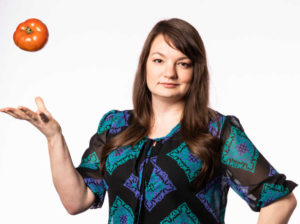
A previous scholarship targeting transfer students is what persuaded alumna Sara Sargent to choose St. Thomas’ School of Engineering. She had been a store manager at Victoria’s Secret and a co-manager at retailer Williams-Sonoma when she decided what she actually wanted to do was become an electrical engineer. She took three years of courses at Century College before turning an eye toward St. Thomas’ transfer program.
“I was initially scared away by the cost of St. Thomas,” said Sargent, who at the time had a house, a mortgage and a husband who supported her career goals. “One of the students who left Century College the year before me went to St. Thomas and told me about scholarship opportunities.”
She added that her $18,000 transfer scholarship from the University of St. Thomas was just what she needed. “It really made a big difference.”
Of the students transferring into the School of Engineering in past years, about 20% were low-income, Pell Grant-eligible. These students would qualify for the school’s APEX scholarship. In addition, having a shared community will give them a better chance of thriving at the university.
“Five of us from Century transferred in together and remained a tight-knit group. We got to know other transfer students, as well,” Sargent said. “It was nice having that community of other transfer students. Half of us were older than the traditional students and having that community of students with similar challenges, you didn’t feel as if you were singled out or a minority. I was impressed with the number of transfers.”
The NSF S-STEM grant will allow the School of Engineering to increase its support programming and activities targeting transfer students. Funding will also go toward a new summer bridge course, monthly seminars to boost skills, and faculty, peer, and industry mentoring. Through the APEX project, St. Thomas will also accelerate the engineering efforts to advance an inclusive culture by addressing structural limitations that are common in engineering programs’ curriculum, teaching practices and recruitment efforts.
Acton added that funding from the grant will support a seminar series that will help students network and make industry connections and receive support with resume writing, cover letter writing, interview skills and other career readiness tools.
“These strategies will have significance for engineering education broadly, and for supporting and retaining our transfer students,” Acton said. “As a result, the APEX project will produce diverse, well-qualified engineers who will meaningfully contribute to fueling innovation in the Twin Cities region.”
Those interested in learning more about the University of St. Thomas’ School of Engineering programs and scholarships can visit engineering.stthomas.edu.
Editor's note: Transfer status is not a requirement for eligibility, nor a selection criteria for admission to the APEX (Alternative Pathways to Excellence) program, sponsored by the NSF. Transfer students are encouraged to apply.
